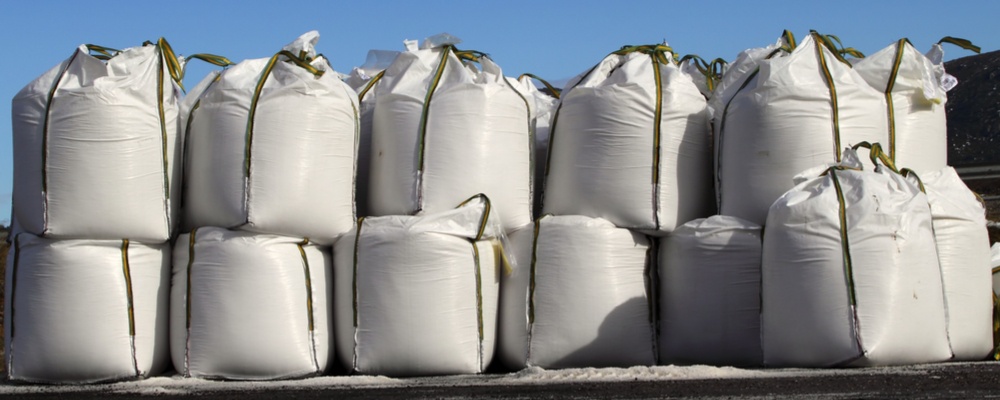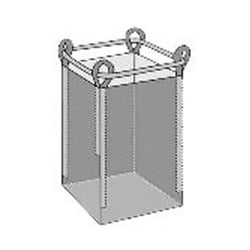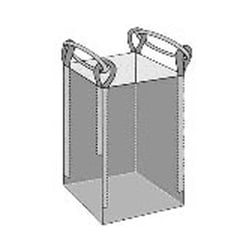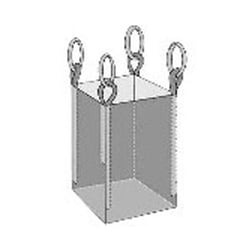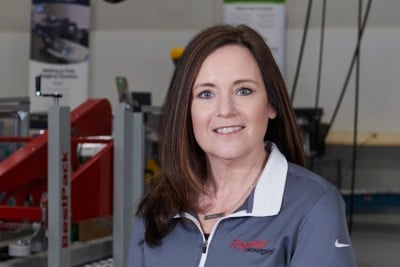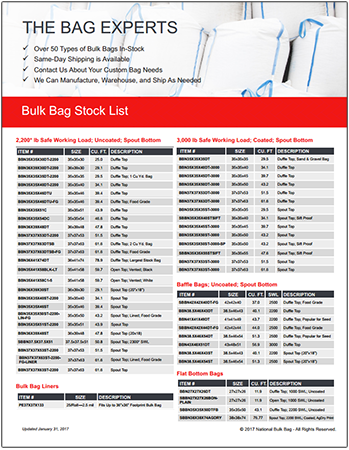Updated 4-29-2022
FIBC Bulk bags have proven to be effective for storing and transporting various products and materials and have also gained a reputation for being a versatile bulk packaging option. One customizable feature of flexible intermediate bulk containers that makes them a versatile bulk packaging solution is the top loop construction. With multiple loop construction options, bags can be customized to fit your specific application and operation.
Let’s examine the pros and cons of four of the most common types of lift loops used and hopefully determine which type of lift loops are right for your unique application. For regular updates, subscribe to our blog by filling out the “Subscribe to our blog updates” form to the right.
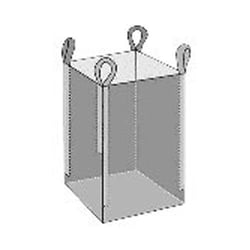 Loop over Loop (Corner Seam Loops)
Loop over Loop (Corner Seam Loops)
Loop over loop lift loops, also known as corner seam loops, are the most commonly used type of lift loop construction. For this type of construction, each corner has a lift loop sewn into the seam of the bag. A forklift can lift this bag, but all four loops must be used, making loading and transporting bags somewhat tedious.
Pros: Loop over loop/corner seam loops are the most common type of loop and are a cost-effective option.
Cons: This type of loop construction may be harder to use with forklifts.
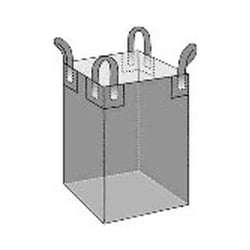 Cross Corner Loops
Cross Corner Loops
Much like loop over loop lift loops, cross-corner loop bags are constructed with loops in each corner of the bag, but instead of the loops being sewn into the seam in the corner of the bag, they are constructed with the lifting loops sewn into eight points in opposite corners of the bag. One caveat of using bags with cross corner loops is they require that the bag is made from circular fabric.
One of the biggest benefits of using cross corner loop bags is the loop design and how they position themselves when the bag is full. These specific loops are designed to ensure that the lifting loops stand upright, making it easier for forklift operators to grab and lift, thus reducing bag handling times.
Pros: Cross corner loops stand upright making it easy for forklift operators to grab and lift
Cons: Usually more expensive than loop over loop construction
Stevedore Straps (AKA Stevedore Lift Loops, Single, Double, & Supporting Loops)
Stevedore straps/lift loops are special supporting loops designed for the safe handling of bulk bags. While bags with four loops must be lifted at all four points for safe handling, bags with Stevedore loops allow lifting equipment to lift from only one or two. There are three different types of Stevedore Straps:
- One Stevedore Loop: is a loop pulled through the four standard corner loops to connect all of them.
- Double Stevedore Loops: these are two loops that connect each parallel loop at the corners.
- Supporting Stevedore Loops: are supporting loops that are attached to each corner loop.
Pros: Ability to lift the bag by one or two loops. Multiple ways to lift the bag.
Cons: Specialty and can be more expensive
One Stevedore Loop
|
Double Stevedore Loops
|
Supporting Stevedore Loops
|
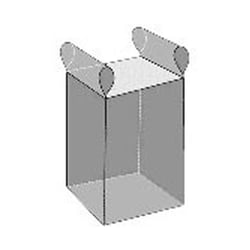 Sleeve Loops/Lift Tunnel Loops
Sleeve Loops/Lift Tunnel Loops
Sleeve/Lift tunnel loops are a special type of loop made from bulk bag body fabric. Sleeve/Tunnel loops are a very practical style of lift loop for operations exclusively using forklifts to pick up and move FIBCs. If you use forklifts exclusively to move bulk bags, bags with sleeve/tunnel lift loops are great options. Sleeve/Lift tunnel loops can be designed to be at the bottom or the top of the bag depending on your specific application. Sleeve/Lift loops on the bottom of the bag can be beneficial when height clearance is an issue.
Pros: Easiest option for forklift operators.
Cons: Specialty lift loops are only usable by forklifts.
Thanks for reading!
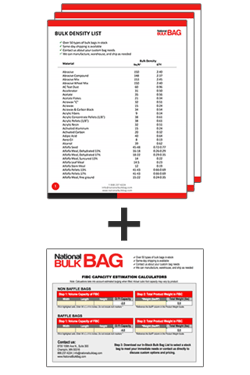
Thanks for reading about the most common types of flexible intermediate bulk container lift loops!
Safety and reliability are our top priorities. Each bag that we sell has a safe working load (SWL). To make sure the product you’re packing will not exceed the SWL of the bag you’re interested in, you’ll need to know the bulk density of the product you’re packing as well as the cubic foot capacity of the bag.
Click the button below to download our Product Weight Guide and FIBC Volume Calculator to help you determine how much weight a specific bag will hold.

